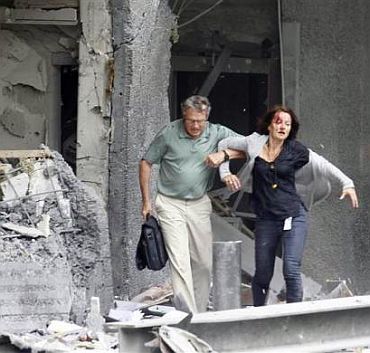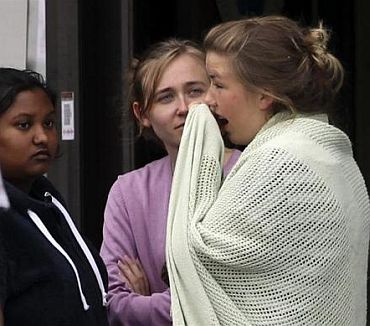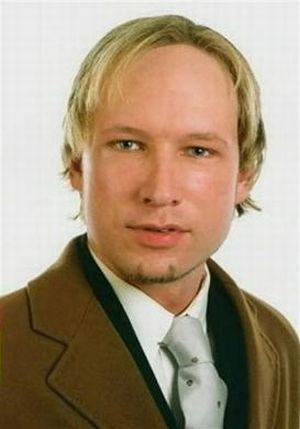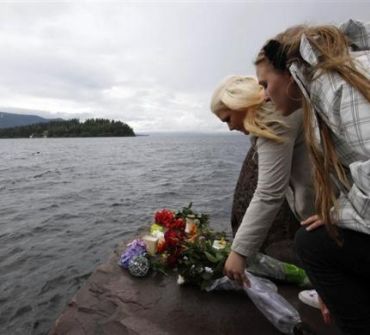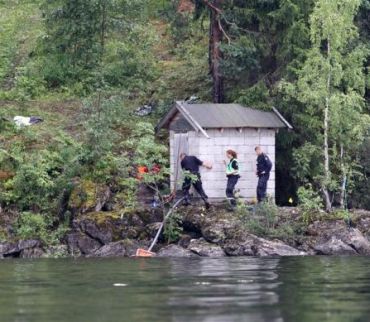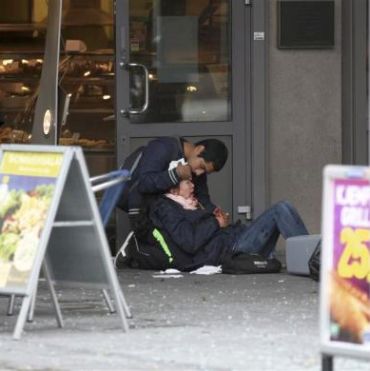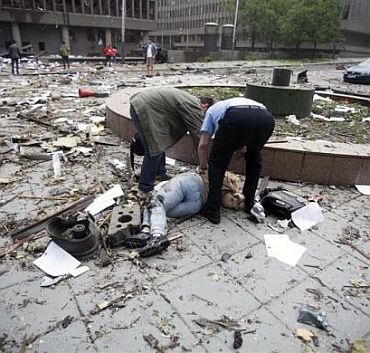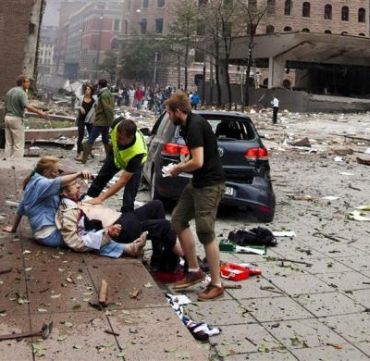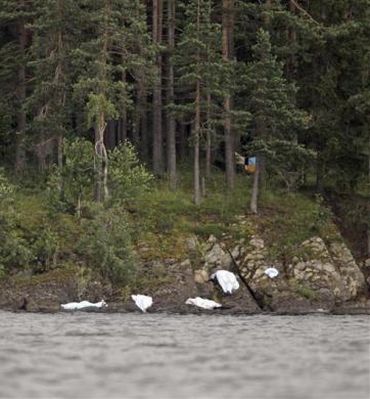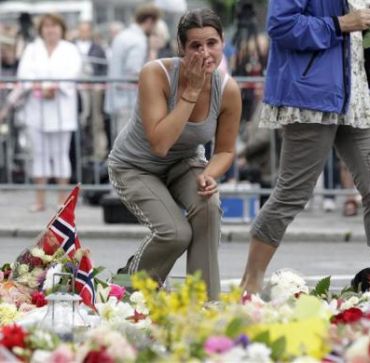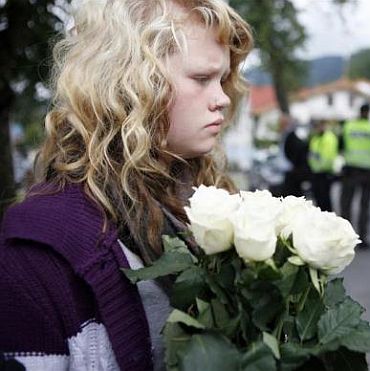 | « Back to article | Print this article |
Norway bloodbath: What we knew and did not
B Raman follows up on the investigation into the deadly July 22 terror strikes in Norway, which claimed 93 lives
Terrorism analysts have come in for criticism in connection with the carnage in Norway on July 22. Any comments?
Initial reports were of a car bomb explosion outside the office of the Norwegian Prime Minister in Oslo.
Norway has had no major terrorist strikes in the past, but has had at least two terrorism alerts -- in 2003 when Ayman Al-Zawahiri of Al Qaeda had included Norway in the list of countries targeted by Al Qaeda in the wake of the US-led occupation of Iraq and in 2010 when three jihadi suspects -- an Uighur, an Uzbeck and a Kurd---- were arrested as part of an on-going investigation extending across a number of Western countries, including Norway.
In the absence of any other indicator, the minds of most analysts recalled these two alerts.
Click on NEXT to read further...
Initial reactions fell into two groups
In the meanwhile, reports started coming in of the attack by a gunman on a youth camp of the ruling Labour Party on an island called Utoeya. The analysts fell into two groups in reacting to these reports.
Some, including this writer, refrained from connecting the two incidents and waited for further details of the attack on the youth camp. Some connected the two and put out stories of a major attack by Al Qaeda in Norway.
When the gunman was ultimately arrested by the police and interrogated, it turned out that he had carried out the explosion in Oslo as well as the attack on the Labour Party youth camp in which nearly 85 participants were reported to have been massacred and that jihadi terrorist organisations were not involved in any of these incidents.
Breivik thought it was gruesome but necessary
What details are so far known of the perpetrator of the two attacks?
His name is Anders Behring Breivik, 32. He has reportedly admitted to carrying out both the attacks, which he described as "gruesome but necessary".
Breivik's lawyer Geir Lippestad told Norwegian media: "He thought it was gruesome having to commit these acts, but in his head they were necessary. He wished to attack society and the structure of society," Mr Lippestad said. He added that the actions had been planned for some time.
The BBC has reported the following details of the suspect: Describes himself as a Christian and conservative on a Facebook page attributed to him. Grew up in Oslo and attended the Oslo School of Management. Set up a farm through which he was able to buy fertiliser, which may have been used to make a bomb. He is reported to have had links with right-wing extremists.
A follower of the Knights Templar?
Still pictures of him, wearing a wetsuit and carrying an automatic weapon, appeared in a 12-minute anti-Muslim video called Knights Templar 2083, which appeared briefly on YouTube.
A 1,500-page document written in English and said to be by Breivik -- posted under the pseudonym of Andrew Berwick -- was also put online hours before the attacks, suggesting they had been years in the planning.
The document and the video repeatedly refer to multiculturalism and Muslim immigration; the author claims to be a follower of the Knights Templar -- a medieval Christian organisation involved in the Crusades, and sometimes revered by white supremacists.
the suspect looked upon himself as a crusader
Police have not speculated on motives for the attack but the bomb in Oslo targeted buildings connected to Norway's governing Labour Party, and the youth camp on Utoeya island was also run by the party.
In the document posted online, references were made to targeting "cultural Marxists/ multiculturalist traitors".
From the available details, it would appear that in his mind, the suspect looked upon himself as a crusader carrying on a crusade not only against Muslims, but also against those failing to act against Muslims.
Breivik's primary anger seems to have been against the Muslims
His primary anger seems to have been against the Muslims and his secondary anger against the Norwegian Labour Party for failing to act against the Muslims.
It is this secondary anger which has led to the carnage.
Was he acting alone or did he have accomplices?
The police believe that he was acting alone, but have been checking whether he had accomplices since some of the inmates of the camp had expressed the suspicion that he probably had an accomplice.The suspect has confessed to both the incidents
On what basis the police have concluded that he was responsible for both the incidents?
The suspect has confessed to both the incidents.
It is not yet clear whether the police have found any other corroborative evidence other than the fact that he had bought a large quantity of fertiliser for his farm.
Police did not give priority to intervention in the island
It has been reported that there was a delay of about 90 minutes in the police intervening in the island to arrest and disarm the suspect. What was this delay due to?
Initial reports had said that the police were preoccupied with preventing any more explosions in Oslo and did not give priority to intervention in the island.
Subsequent reports disseminated by the BBC have indicated as follows: Local police said a boat they wanted to use to get to the island was too small and leaky to carry personnel and equipment, and they decided to wait for a special unit from Oslo.
And asked why a helicopter was not used, police chief Sveinung Sponheim said this would have taken longer as the nearest police helicopter was at a base in the south.
Deadly acts of an angry individual mind
Would this be categorised as terrorism?
So far, there is no evidence to show that he carried out the carnage at the instance of any organisation in fulfilment of its political or ideological or religious objective.
It looks like the acts of an angry individual mind, which was partly irrational and partly rational.
The irrationality is seen in the gruesome nature of the acts committed and in the absence of any post-facto feelings of remorse.
The rationality is seen in the methodical manner in which the irrational acts were planned and carried out.
Norwegian Police cannot be blamed for not preventing the gruesome acts
Will it be possible to anticipate and prevent such irrational acts of individuals?
Very difficult unless someone notices the initial signs of preparation for the gruesome acts and alerts the police.
The Norwegian Police cannot be blamed for not preventing the gruesome acts, but they could have reduced the gruesome nature of his acts if they had provided physical security to the camp or had the means of quick intervention.
Norway had no previous history of large fatality terrorism or carnage
It is difficult to say in the absence of details whether the police could have prevented the explosion in Oslo.
Norway has had no tradition or culture of high-grade physical security since it is a fairly balanced society with no previous history of large fatality terrorism or carnage.
It was not a self-complacent society. But, it was a society which thought it was at peace with itself and hence did not have to dread such incidents. These assumptions and perceptions will change now.
The writer is Additional Secretary (retd), Cabinet Secretariat, Government of India, New Delhi.
